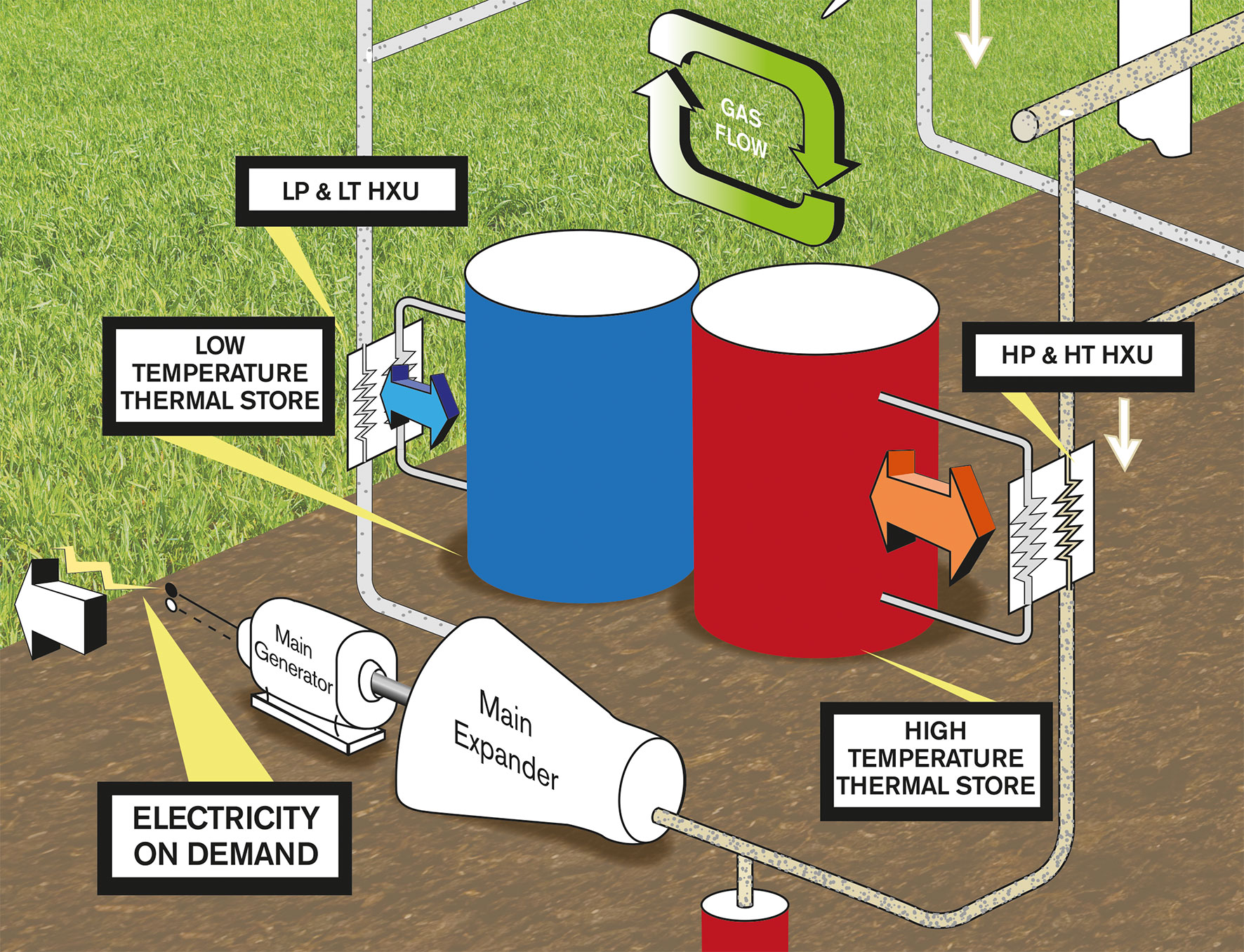WindTP achieves storage of useful energy (work) by pumping heat from cold to hot. When that useful energy (work) is to be released, it allows heat to flow back from the hot to the cold. It is imperative, therefore, that WindTP can achieve cost-effective storage of both heat and coolth (coldness).
To understand WindTP properly, it is best to understand the concept of “exergy”. Exergy is different from energy. In fact, when most people discuss “energy storage” it is really “exergy storage” that they are talking about. Exergy is the ability to do mechanical work (or equivalently, it is the ability to produce electrical energy) when a system comes back into equilibrium with its environment. A mass of 1kg raised above the ground by 1m has 9.81J of exergy because you could extract 9.81J from it as it was lowered back to ground level. A float with net buoyancy force of 10N sunk 100m under water has a net exergy of 1000J because you could extract this much work from it as it naturally rose back to the surface. These are relatively simple examples. Things become slightly more complex when we discuss heat energy. A ton of rock heated up to 600C from an ambient temperature of 20C requires about 493MJ of heat to raise its temperature but it only contains about 221MJ of exergy. This is because 100J of heat taken in at 20C contains no exergy at all but 100J of heat taken in at 600C contains around 66J of exergy. Averaged over the complete temperature range discussed here, the ratio between exergy and heat energy is around 44.8%.
When WindTP stores some exergy in a hot-store, 60% of that is kept in a hot-store and the remaining 40% is retained in a cold-store. The two stores have the same thermal mass.
The thermal stores can be implemented as non-pressurised gravel beds following the format of “thermocline” heat stores. Air can be used as a heat-transfer fluid to carry heat between these thermal stores and a heat-exchanger through which the pressurised gas travels. For the cold-store, this heat-transfer air must be dry to prevent any moisture content from freezing. Thermal storage using packed beds is very well established.

